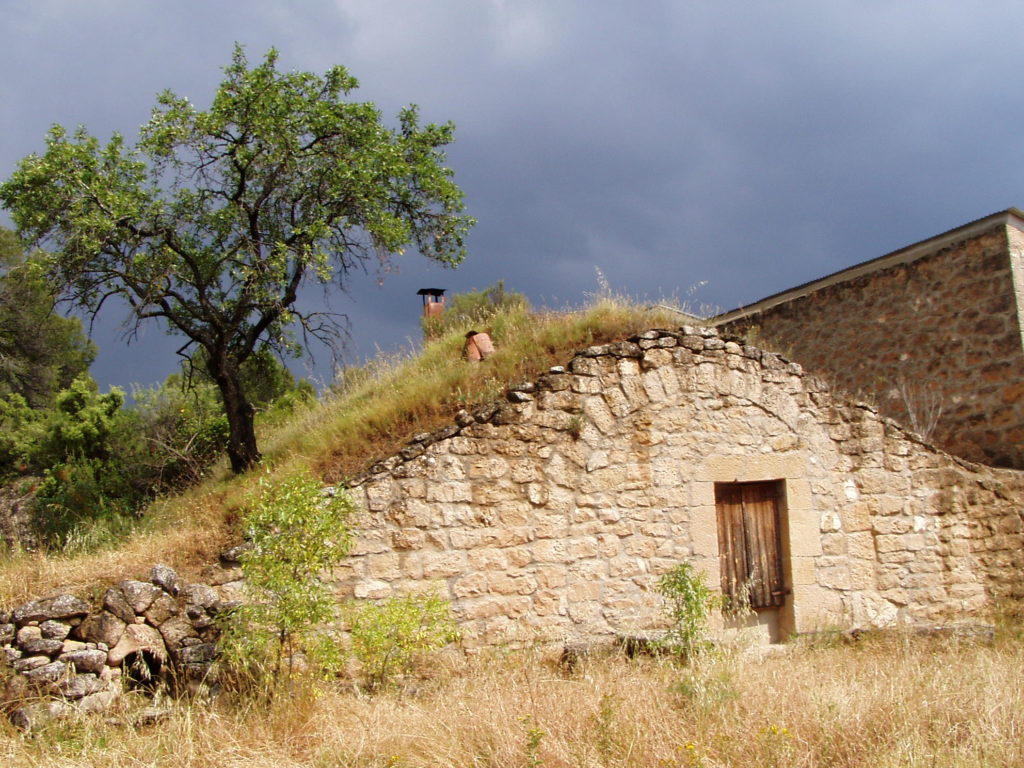Vaulted huts are dry land constructions that are part of popular architecture, especially from the second half of the 19th century in the name of the expansion of the olive oil trade
They mainly provided protection to animals against the elements, being often used by farmers to protect themselves from inclement weather when they were in the farm.
They also kept work tools there or dried some seasonal fruit.
They were built with stones without joining materials (what we call dry stone), rectangular and with a single nave that served as a living room.
They have a barrel-vaulted roof covered with soil, and lilies were planted in many of them!
Its roots further tied the roof of the hut together, preventing cracks, and the vegetal covr also helped to regulate the temperature of the hut.
Inside the cabins there was a feeding place for the animals (the donkey or the mule, animals needed to cultivate the olive trees).
You can also find two small holes in the wall in the form of a cupboard, one higher, where the farmer kept his or her food, and a lower one, where the wine and the water were placed, to keep them cool.

Some also have an oven, or a corner that served as a fireplace and some even have a well inside.
Did you know that in our region, during the bombings of the Civil War, the vaulted cabins sheltered many families escaping from the continuously bombarded towns?
They found in the vaulted cabins and the countryside the means of living and survival.
some other exemples of rural achitecture: Aljub


